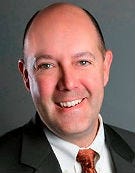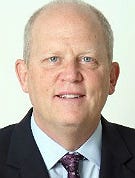Avaya Engage: Channel Leader Talks Products, Building Partner Trust
Approximately 75% of Avaya’s business comes through a channel partner.
June 22, 2023

The Avaya Engage 2023 conference in Orlando, Florida, this week was the organization’s moment to shine. After a year in which Avaya spokespersons both proactively reached out to media as well retreated from the press (due to reasons surrounding Chapter 11), company officials could now put the Avaya bankruptcy behind them and confidently spell out the innovation road map. The future is a bright one, they said.
What’s new? Maybe the most buzz surrounded the Avaya Experience Platform (AXP), a cloud-based CCaaS and collaboration offering that lets customers and partners add new communication tools when they want. Avaya officials said it will set them apart from the CX competition.
John Lindsley, vice president, channels at Avaya, outlined how the platform will benefit agents.

Avaya’s John Lindsley
“While we’ve had a TSD facing program, the opportunity that we have is to double down, reinvest and apply that AXP story into the agent community,” Lindsley said.
He noted that AXP can be sold as stand-alone, or sold to sit on top of other platforms, or serve as an integrated experience with the Avaya Cloud Office offering.
As much as Lindsley is focused on the Avaya technology portfolio, his immediate attention is on fiscal year 2024.
“I do know that the competitive environment that we’re in means the onus is on us to create a competitive program that can sense and drive and reward the behaviors that we’re looking to [incentivize],” he said.
Getting partners on board means fostering trust. Approximately 75% of Avaya’s business comes through a channel partner.
“No. 1, we are building bridges of trust and communication in a way that we didn’t previously,” Lindsley said. “That’s with executive engagements. That’s with town halls. That’s with a full embrace of our partner community, even through some of the headwinds we’ve been through. What really matters to me is how are we doing?”
What are the metrics?
Lindsley added that Avaya has taken 15% of revenue decliners—whether it be those “shrinking” in cloud or on premise—and have turned them back to growth within six months “amid a set of external forces and factors that would certainly defy all odds,” Lindlsey said.

Avaya’s John Colvin
In this interview with Channel Futures, Lindsley is joined by John Colvin, head of Americas and global partner marketing at Avaya. The two discuss AXP, building new confidence behind the brand, and the nuances of organizing a global partner base.
Channel Futures: John [Lindsley], on a personal level, I want to know how you’ve held up this last year, because it’s been a challenging one for the company.
John Lindsley: It’s been a challenging year, but the support and the encouragement and the reassurance that we received from our partners throughout this time has actually been a real source of strength for us. One of the first things that we committed to from the outset with our partners was to be clear, transparent, and to strengthen our communications proactively with them. And we’ve delivered against that. It’s been a real source of encouragement that we’re making a difference. We’re doing the right things. There’s lots more to do, but we’re on the right path. And so having the support and the encouragement of our partners I think has been really, really helpful over the last year.
In the first 90 days I was intentional about meeting with 50 partners. And I thought that was an important thing to do to understand what I was walking into, what the current climate was and where the opportunities were. It was in those 50 meetings that four key themes came out. The first one was pertaining to road map. We’ve got this amazing portfolio and this crown jewel of installed base customers, but what is the strategy? Partners asked: What do you want us to sell? The second theme had to do with ease of commerce. We talk a lot about customer experience. How about the partner experience? What steps are we taking to make it easier, frictionless, automated, self-sufficient for partners to engage with us, as compared to some of our born-in-the-cloud competitors who built easier processes from the ground up. We have an opportunity to improve our ease of commerce with our partners. The third piece was around our public cloud strategy and the relationship with RingCentral. The fourth major pillar was about building trust and in strengthening communications. There had been a lot of change in channel leadership, so it was a challenge to get continuity and to build that trust.
CF: When you took on your role at Avaya, were you aware of the hurdles that were ahead?
JL: I wasn’t aware of specific financial hurdles. What I was aware of was the opportunity to transform our partner base from a heritage to an MRR, from a heritage on premise to a cloud or hybrid. We had similar challenges and opportunities in my previous two companies. The challenge that I knew I was going into was an impressive, impressive collection of partners that helped us build our company and build our customer base to what it is today. The challenge was the transformation of that partner community to this journey that we’re on now. The financials obviously came into play. But the bigger transformation is what I knew I was coming into.
John Colvin: So that’s the work that we have been working on, specifically what John has been working on with his team. Of course, I’m on the support side of that, but I think that’s the journey that we must take them on. And we’ve got to make sure that [partners] are making those transformational steps with us because, if they don’t, then they’re leaving our customers behind. We can’t let that happen. So, we’re helping partners move forward in that transformational process.
JL: They’re risking themselves, too. They’ve built a strong business over several decades and, in many cases, they’ve had these customer relationships for a long time. But having those relationships in the past is no guarantee to have those relationships in the future. There must be an evolution that takes place within our partner base, and that evolution is that of embracing new delivery models, new platforms, focusing on outcomes and focusing on the experiences.
CF: There were several technological advancements Avaya announced this week at Engage. Which ones have the more immediate impact on partners?
JL: I mean there’s certainly the AXP, the Avaya Experience Platform. It’s the future of our company. It’s not just CCaaS. It’s CCaaS on steroids. It’s taking our customers on a journey to help differentiate themselves among their competitors through all the elements of that platform that we are delivering. Certainly, there are other competitors in this space. There’s plenty of other competitors in this space. We’re working hard to differentiate this platform. We’re working hard to personalize this platform and link it with Avaya customer experience, services or solutions. For our partners, installed base, new logos, our own platforms, competitive platforms, agents, resellers…I mean, everybody gets to play and that’s one thing that I really, really like about how we have built AXP.
JC: I think the term platform was certainly intentional. A platform is a place where you can see it as foundational, or you can see it as above foundation, as it gets you to the next level. The AXP platform itself will allow us not just to deliver on what is needed today but allow us to jump forward. We’re future-proofing that technology and we’re future-proofing the company. We’re taking our partners on this journey. It’s not just our traditional VARs. It’s the ecosystem of partnerships. We will allow them to build on to our platform so that they can provide value-added services through APIs to help get to the next level. It’s a jumping off point for AI experiences that we’re creating.
CF: Considering the trajectory of the past year, going forward, how do you build trust among partners?
JL: I don’t want to dwell on the financial noise, but I’m going to dwell on it for this one piece because it’s important. We told our partners in a series of outbound messages and townhalls that we would not disrupt their operations. We would not disrupt their commissions. We would not disrupt their support. We would not disrupt their team. There have been plenty of financial disruptions across our industry in the past and this year. So, we’re not alone. But what we said was, we would not impact partner business, we would not impact the relationships that partners have with our shared customers. We’re not going to let you down. We have a plan. We’re working our plan. We did exactly what we said we would do. We didn’t disrupt anything. And that’s important. That’s just one example. The shadow that [CEO Alan Masarek] casts as a leader is so significant. Partners have responded well to his type of leadership and the corresponding follow-ups.
CF: Avaya has an incredibly diverse partner base globally. How does your organization reach out to grow this base when you have so many different cultures and ways of doing business? How do you do that as the channel leader?
JL: There are a couple of answers to that question. First, I’m only one channel leader. I have a counterpart who is based in the Middle East, Fadi Moubarak, and he runs the international theater for Avaya. And he and I have a very close relationship. He’s been here a long time. He was actually one of my early confidants where I was reaching out to him on a pretty regular basis just to get the rules of the road and get the ropes and such. Fadi has been a tremendous advocate. He and I talk frequently. We’ve actually been challenged to streamline our global approach to our channel strategy. That doesn’t mean that it’s even one organization or a single approach. It is an approach that will reflect the nuances of the theaters of the regions. For example, the agency model, is very popular and prevalent in the United States. It’s not as mature in other parts of the world. In Western Europe, it’s not quite as mature there yet. And then certainly from a cloud standpoint, there are certain areas of the world where cloud is not nearly as prevalent. So, our global channel strategy doesn’t really drill down too deeply into product or even partner type. But rather, it’s a broad approach of multiple partner types, all our platforms, and all our delivery models. It’s a very universal, all-in kind of approach. But having somebody like Fadi alongside me to kind of manage that whole international theater, and having the tight coordination that we have, helps to address the needs of the different regions of the world and where they are.
CF: Is there a final point that either one of you want to make about partners and Avaya’s future?
JL: It’s a very exciting time to be an Avaya partner. We have the pieces. We’re putting the pieces together. Our partners are critically important to our strategy and will continue to be critically important to our strategy. We’re here to serve them. We’re here to support them. We need to make sure that we’re aligned, and we need their support. We’re earning every customer and protecting and modernizing every customer… we need our partners by our sides.
Want to contact the author directly about this story? Have ideas for a follow-up article? Email Claudia Adrien or connect with her on LinkedIn. |
About the Author
You May Also Like


